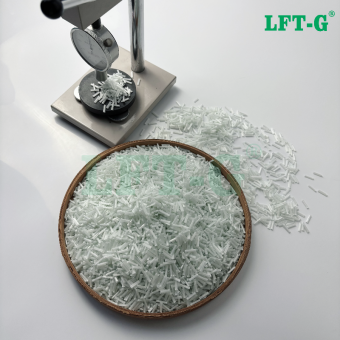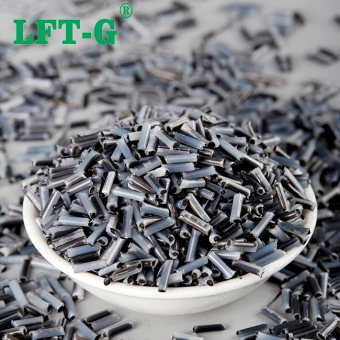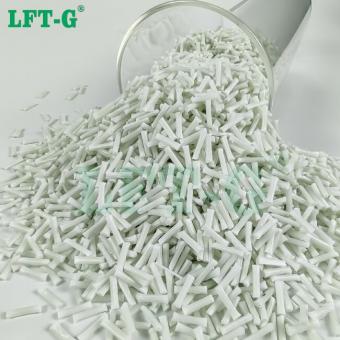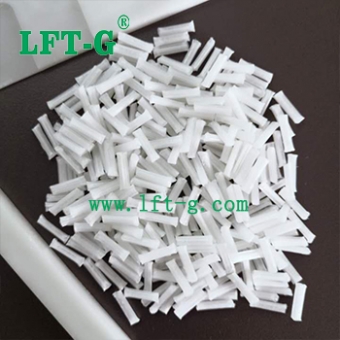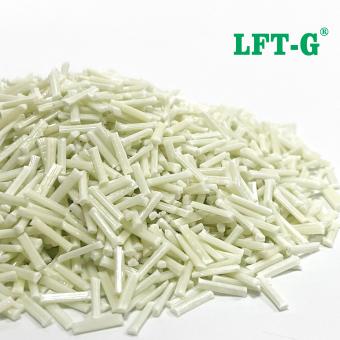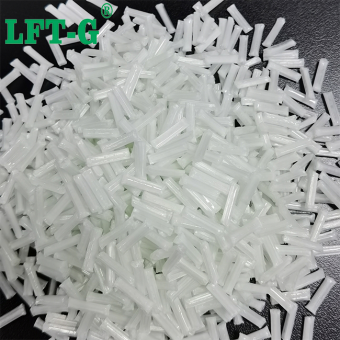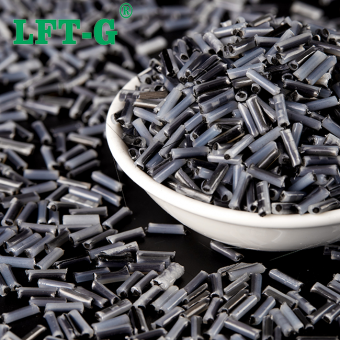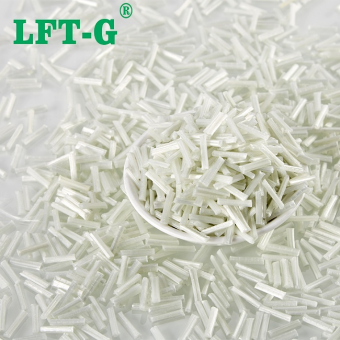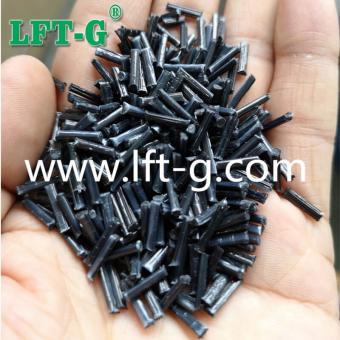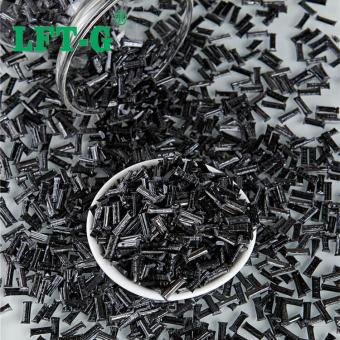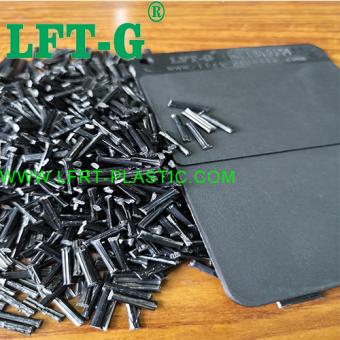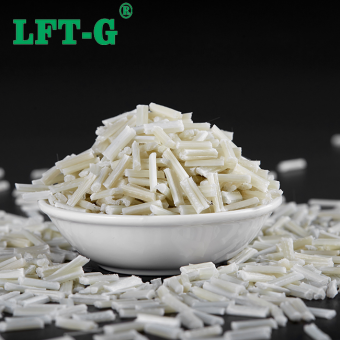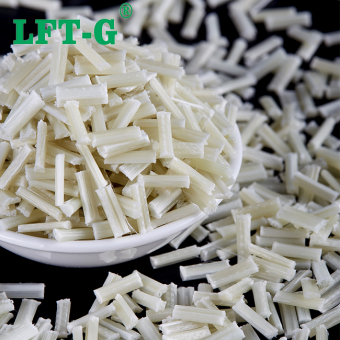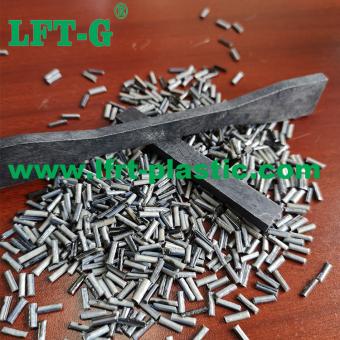-
原料複合材 ポリプロピレン ガラス長繊維40製品導入 ガラス長繊維強化ポリプロピレン (PP-LGF) 材料は、軽量、高比強度、優れた耐熱性、リサイクルなどの利点から、自動車業界で広く使用されています。 ガラス長繊維強化ポリプロピレン (PP-LGF) 材料低コスト、高比強度、高耐熱性などの特長があります。1980 年代初頭に開発されて以来、自動車部品の一部の金属またはエンジニアリング プラスチックを置き換えることが期待されています。 ポリプロピレンロンググラスファイバー40もっと見る
-
PA6 ポリアミド 6 ファイリング長炭素繊維複合工業原料 lcf40品番:PA6-NA-LCF40 製品繊維: 20%-60% 製品用途: ヘルメット、車のバンプ、ロボット、アームなどの製造に適しています。 製品の特徴:高靭性、軽量、高強度、耐摩耗性、耐食性、耐クリープ性、伝導性、伝熱性。もっと見る
-
高耐熱PA12長炭素繊維複合樹脂スポーツパーツ自動車繊維仕様:20%-60% 製品グレード:ノーマルグレード
- 高い耐衝撃性
- 樹脂プラスチック
- コスト削減
- カスタマイズされた製品
タグ :
-
-
航空宇宙分野向けナイロン66高性能PA66長炭素繊維複合材料What is PA66 plastic? Polyadipyladipylenediamine, commonly known as nylon -66, is a thermoplastic resin, generally made from adiponic acid and hexadipamine condensation. Insoluble in general solvents, only soluble in m-cresol, etc. High mechanical strength and hardness, rigidity. It can be used as engineering plastics, mechanical accessories such as gears, lubricating bearings, instead of non-ferrous metal materials to make machine shells, automotive engine blades, and can also be used to make synthetic fibers. PA66 plastic raw material is translucent or opaque opalescent crystalline polymer, with plasticity. Density 1.15g/cm3. Melting point 252℃. Embrittlement temperature -30℃. Thermal decomposition temperature is greater than 350℃. Continuous heat resistance 80-120℃, balanced water absorption rate of 2.5%. Resistant to acid, alkali, most aqueous inorganic salts, alkyl halides, hydrocarbons, esters, ketones and other corrosion, but easy to phenol, formic acid and other polar solvents. It has excellent wear resistance, self lubricity and high mechanical strength. But the water absorption is larger, so the dimensional stability is poor. What is Long Carbon Fiber? In the modified engineering plastics industry, long fiber reinforced composite material refers to long carbon fiber, long glass fiber, aramid fiber or basalt fiber and polymer matrix, through a series of special modification methods to produce composite materials. The biggest characteristic of long fiber composites is that they have superior properties that the original materials do not have. If they are classified according to the length of the added reinforcement materials, they can be divided into long fiber, short fiber and continuous fiber composites. As mentioned in the beginning, long carbon fiber composite material is a kind of long fiber reinforced composite material, which is a new fiber material with high strength and high modulus fiber. LCF carbon fiber composite exhibits high strength along the fiber axis, and has the characteristics of high strength and light weight. It has the comprehensive mechanical properties such as density, specific strength and specific modulus that are incomparable to other materials. It is a new material with excellent mechanical properties and many special functions. What are the properties of Long Carbon fiber? Corrosion resistance: LCF carbon fiber composite material has good corrosion resistance, can adapt to harsh working environment; Uv resistance: strong ability to resist UV, products by UV damage problem is small; Wear resistance and impact resistance: compared with the general material advantage is more obvious; Low density: lower than the density of many metal materials, can achieve the purpose of lightweight; Other properties: such as reducing warpage, improving rigidity, impact modification, increasing toughness, electrical conductivity and so on. Compared with glass fiber, LCF carbon fiber composite has higher strength, higher rigidity, lower weight, and excellent electrical conductivity. What is the application fileds of PA66-LCF? 1. Military industry LFT long carbon fiber composite has very high specific strength and stiffness, and has the characteristics of corrosion resistance, fatigue resistance, high temperature resistance and low thermal expansion coefficient, etc. LCF carbon fiber composite is widely used in rocket, missile, military aircraft, personal protection and other military fields at home and abroad. Compared with conventional materials, long carbon fiber composites allow for continuous improvements in the performance of military equipment, such as reducing the weight of warships by 20 to 40 percent. 同時に、LCF炭素繊維複合材料は、金属材料が腐食しやすく、疲労しやすいなどの欠点を克服し、軍事製品の耐久性を向上および強化します。現在、LCF 炭素繊維複合材料の 40% 以上が一部の先進的な軍用ヘリコプターに使用されており、無人航空機ではさらに多く使用されています。航空機に加えて、海兵隊の軍艦にも長い炭素繊維複合材料が使用されています。これは、長い炭素繊維複合材料が海水やさまざまな化学不純物の腐食に耐えることができ、耐用年数が長く、鋼鉄軍艦よりも耐久性があり、メンテナンスコストが低いためです。 、現代の防衛軍事兵器および装備の開発にとって重要な戦略物資となっています。 2. 家電分野 LCF炭素繊維複合材料は、低密度、優れた耐薬品性、優れた性能などの特性を備えており、徐々に家電業界で好まれる改質エンジニアリングプラスチックとなり、その使用量は約30%を占め、増加傾向にあります。さらに、家電製品はますますインテリジェント化およびパーソナライズされており、材料の改良された性能要件はより高くなります。したがって、長炭素繊維複合材が家電業界に選ばれるのも不思議ではありません。 1、グリーンおよび環境保護:従来の材料と比較して、製造プロセスは比較的シンプルですが、より環境保護、より経済的であり、高光沢、形成が容易、耐傷性、リサイクル可能な特性を備えています。 2、安全性と高い安定性:サイズの安定性が良好で、低温および高温の使用環境に適応でき、変形の問題が小さく、安全に使用できます。 3、高い耐疲労性:長期間使用でき、クリープが小さく、総合的な機械的特性が優れています。 4.軽量:密度が低いため、完成品の重量が軽くなり、毎日の使用に便利です。 3. 風力タービンブレード 風力タービンの重要なコンポーネントの 1 つはブレードです。風力タービンブレードの製造では、空気力学的影響、技術プロセス、複合材料の構造を考慮する必要があり、ブレードの長さは風力タービンの出力に比例します。ブレードの全体の質量は大きくありませんが、ファンの中で 15% ~ 20% を占める最もコストの高い部品であるため、ブレードを作成するための材料の選択は非常に重要です。 ファンブレードは表面の汚染物質や粗さの影響を受けにくく、構造的に可能な限り厚いブレード形状を使用する必要があります。風に耐えられる疲労回復回数が多ければ多いほど良い。ブレードの長さが長くなると、強化材の強度と剛性に対して新たな要件が求められます。大型複合ブレードの製造におけるガラス繊維の性能は明らかに不十分です。LFT 長炭素繊維複合材料を使用することは、ブレードの質量要件を軽減し、強度と剛性の要件を満たす最良の方法です。 より強力な風力発電設備とより長いローターブレードの開発では、より優れた性能を備えた LCF 炭素繊維複合材料が使用されるのが一般的な傾向です。さらに、一定のサポートがあれば、長いカーボンファイバーブレードはグラスファイバーブレードよりも安価であり、材料の消費、労働力、輸送、設置コストが削減さ...もっと見る
-
PBT充填長ガラス繊維LGF射出グレード複合高品質自然色PBT-LGF Polybutanediol terephthalate (PBT) has excellent comprehensive properties, such as high crystallinity, rapid prototyping, weather resistance, low friction coefficient, high thermal deformation temperature, good electrical properties, excellent mechanical properties, fatigue resistance, can be ultrasonic welding. However, its notched impact strength is low, forming shrinkage rate is large, hydrolysis resistance is poor, easy to be eroded by halogenated hydrocarbons, after glass fiber reinforcement, because of the product longitudinal and horizontal shrinkage is inconsistent easy to warping products. With its excellent comprehensive performance, PBT is widely used in electronic and electrical appliances, automobile industry, machinery, instruments and household appliances and other fields. Common problem & Solvement Glass fiber reinforced PBT material warps easily Reasons: Warping is the result of uneven shrinkage of the material. The warping of the product can be caused by the orientation and crystallization of the components in the material, the improper technological conditions used in the injection molding, the wrong shape and position of the gate in the mold design, and the uneven thickness of the wall in the product design. The warping of PBT/GF composites is mainly due to the fact that the orientation of the glass fiber in the flow direction restricts the shrinkage of the resin, and the induced crystallization of PBT around the glass fiber strengthens this effect, making the longitudinal (flow direction) shrinkage of the product less than the transverse (perpendicular to the flow direction). This uneven shrinkage leads to the warping of PBT/GF composites. Solution: 1. Add minerals and use the shape symmetry of mineral fillers to reduce the anisotropy caused by the glass fiber orientation; 2. Add amorphous materials to reduce the crystallinity of PBT and reduce the uneven shrinkage caused by crystallization, such AS ASA or AS, but they have poor compatibility with PBT, so appropriate compatibilizers need to be added; 3. Adjust injection molding process, such as increasing mold temperature and increasing injection cycle appropriately. Glass fiber reinforced PBT surface floating fiber problem Reasons: The causes of floating fiber are more complex, in short, there are mainly the following aspects 1. The compatibility of PBT and glass fiber is very poor, resulting in the two can not effectively bond together; 2. The viscosity of PBT and glass fiber is very different, resulting in a tendency of separation between the two in the flow process. When the separation effect is greater than the adhesive force, the separation will occur, and the glass fiber will float to the outer layer and leak out; 3. The existence of shear force will not only lead to local viscosity differences, but also destroy the interface layer melt viscosity on the glass fiber surface, the smaller the interface layer is damaged, the smaller the bonding force on the glass fiber. When the viscosity is low to a certain degree, the glass fiber will get rid of the PBT resin matrix and gradually accumulate to the surface and expose. 4. Influence of mold temperature. Due to the low temperature of the mold surface, the glass fiber with light weight and fast condensation is frozen instantaneously. If it is not fully surrounded by melt in time, it will be exposed and form "floating fiber". Solution: 1) Add compatibilizers, dispersants and lubricants to improve the floating fiber problem. For example, the use of special surface treatment of glass fiber, or adding compatibilizers (such as: SOG, a well-flowing PBT modified compatibilizer) through the "bridge" effect, increase the adhesion of PBT and glass fiber. 2) Optimize the molding process to improve the floating fiber problem. Higher injection molding temperature and mold temperature, larger injection molding pressure and back pressure, faster injection molding speed, lower screw speed, can improve the floating fiber problem to a certain extent. The glass fiber reinforced PBT injection molding process is easy to produce more mold scale Reasons: The formation of mold scale is caused by the high content of small molecules or the poor thermal stability of materials. Compared with other materials, PBT is easy to generate mold scale due to its oligomer and small molecule residue rate usually in the range of 1%-3%. And after the introduction of glass fiber, more obvious. This will lead to the continuous processing process, the need to clean the mold regularly, resulting in low production efficiency. Solution: 1) Reduce the amount of small molecule additives (such as lubricant, coupling agent, etc.), try to choose polymer additives; 2) PBT の熱安定性を向上させ、加工中の熱劣化によって生成される小分子生成物を削減します。 PBT アプリケーション 機械、電子・電気、自動車産業、家電などの分野で広く使用されています。 関連もっと見る
-
Lft-g 高強度高靭性の代わりにメダル PA12 LGF 自社工場製 24 時間オンラインPA12ガラス長繊維 長炭素鎖ナイロンとは、ナイロン分子の主鎖繰り返し単位にアミド基を持ち、2つのアミド基間のメチレンの長さが10を超えるナイロンです。ナイロン11、ナイロン12、ナイロン12なども含めて長炭素鎖ナイロンと呼びます。 PA12 はナイロン 12 であり、ポリドデカクタム、ポリラウラクタムとしても知られ、長炭素鎖ナイロンです。その重合の基本的な材料は、半結晶性 - 結晶性の熱可塑性材料であるブタジエンです。ナイロン 12 は、最も広く使用されている長炭素鎖ナイロンで、ナイロンの一般的な特性の大部分に加えて、吸水性が低く、高い寸法安定性、高温耐性、耐食性、良好な靭性、加工の容易さなどの利点を備えています。 同じく炭素鎖の長いナイロン素材であるPA11と比較すると、PA12の原料であるブタジエンの価格は、PA11の原料であるヒマシ油の価格の3分の1にすぎません。PA11の代替品としてほとんどのシーンに適用でき、自動車燃料パイプ、エアブレーキホース、海底ケーブル、3Dプリンティングなどの分野で幅広く応用されています。 長鎖ナイロンの中で、他のナイロン素材と比較して、PA12は吸水率が最も低く、密度が最も低く、融点が低く、耐衝撃性、耐摩擦性、耐低温性、耐燃料性、良好な寸法安定性、優れた耐久性などの大きな利点を持っています。ノイズ防止効果。 PA12はPA6、PA66とポリオレフィン(PE、PP)の特性を同時に兼ね備えており、軽量化と物理的・化学的特性の両立を実現し、性能面での優位性を持っています。次の表にパフォーマンス データを示します。 PA12の性能 ナイロン 12 には非極性メチレン基が多数存在し、これによりナイロン 12 の分子鎖はより柔軟になります。ナイロン 12 のアミド基は極性があり、凝集エネルギーが非常に大きいため、分子間に水素結合を形成することができ、分子の配列が規則的になります。 したがって、ナイロン12は結晶性が高く、強度が高い。ナイロン 12 は、吸水性が低く、優れた耐低温性、良好な気密性、優れた耐アルカリ性および耐油性、アルコール、無機希酸および芳香族炭化水素に対する中程度の耐性を有し、良好な機械的および電気的特性を有し、自己発火性の材料です。 私たちはあなたに以下を提供できます: 1. LFT&LFRT材料技術パラメータと最先端の設計。 2. 金型前面の設計と推奨事項。 3. 射出成形、押出成形などの技術サポートを提供します。 システム認証 品質マネジメントシステム ISO9001/1949認証取得 国立研究所認定証明書 変性プラスチック革新企業名誉証書 重金属 REACH および ROHS テスト よくある質問 1. 長ガラス繊維と長炭素繊維の射出成形には、射出成形機や金型に特別な要件がありますか? A: 確かに要件はあります。特に製品設計構造、射出成形機のスクリューノズル、金型構造から、射出成形プロセスでは長繊維の要件を考慮する必要があります。 2. 製品が脆くなりやすいので、長繊維強化熱可塑性材料に変更すれば解決できるでしょうか? A: 全体的な機械的特性を改善する必要があります。ガラス長繊維や炭素長繊維の特性は機械的特性に優れています。短繊維に比べて1~3倍(靭性)が高く、引張強さ(強度・剛性)は0.5~1倍になります。 3. 長ガラス繊維強化熱可塑性プラスチックの主な特徴と利点は何ですか? A: 従来の短繊維材料と比較して、LFT-G 熱可塑性長ガラス繊維および長炭素繊維の主な特徴は機械的特性、高い衝撃弾性率および引張弾性率であり、一部の大型製品や構造的負荷がかかる部品により適しています。射出成形、シート、異形パイプ等の押出成形が可能で、簡単な加工が可能です。 その他のご質問は、24 時間オンラインサービスにお問い合わせください。もっと見る
-
LFT-G PEEK 高品質の改質材料は自動車用の長い炭素繊維を充填し、優れた性能を発揮しますWhat is PEEK? Polyether ether ketone (PEEK) is a semi-crystalline thermoplastic polymer material with rigid benzene ring, compliant ether bond and carbonyl group which can promote the intermolecular force in its molecular chain. PEEK has excellent wear resistance, electrical insulation, anti-radioactivity, chemical stability, biocompatibility and thermal stability. In addition, PEEK is reusable and has a high recovery rate. PEEK is widely used in aerospace, electronic and electrical appliances, biomedicine, Marine protection, automobile industry and other fields. PEEK material is an inert material with low surface free energy, and its mechanical properties and frictional properties cannot meet the needs of some special fields. Therefore, it is necessary to modify PEEK composite material to improve its comprehensive properties. At present, filling modification and blending modification are the main methods for preparing PEEK composite materials. Filler modified reinforcement materials mainly include fiber, inorganic particles and whisker; The polymer used for blending modification should have similar polarity and solubility to PEEK. The interface modification method can improve the interface adhesion and enhance the comprehensive properties of PEEK composites. What is PEEK-LCF? As a filling system, fiber can effectively carry part of the load, and the synergistic action between fiber and PEEK can improve the comprehensive performance of composite materials. Carbon fiber and glass fiber are widely used as filler modified composites because of their high strength, high modulus and high durability. Long carbon fiber (LCF) can be used as heterogeneous nucleating agent to promote the crystallization of PEEK in composite materials, which can effectively improve the mechanical and tribological properties of composite materials. PEEK/CF composites of different lengths were prepared by injection molding, and their infiltrating and tribological properties were studied. The results show that the addition of CF increases the contact Angle and decreases the hydrophilicity of the composites. But the friction coefficient of composites is reduced and the friction resistance is improved. Long carbon fiber (LCF) has better effect on reducing friction coefficient than short carbon fiber (SCF). TDS for reference Application Q&A 1. What are the advantages of long carbon fiber materials? A: Thermoplastic LFT Long carbon fiber material has high rigidity, good impact strength, low warpage, low shrinkage, electrical conductivity and electrostatic propertiea, and its mechanical properties are better than glass fiber series. Long carbon fiber has the characteristics of lighter and more convenient processing to replace metal products. 2. Are there any special process requirements of long carbon fiber injection molding products? A: We must consider the requirements of long carbon fiber for the injection molding machine screw nozzle, mold structure and injection molding process. Long carbon fiber is a relatively high cost material, and need to evaluate the cost performance problem in the selection process. 3. The cost of long fiber products is higher. Does it has a high recycling value? A: 熱可塑性 LFT 長繊維素材はリサイクルして再利用することができます。 私たちはあなたに以下を提供します: 1. LFTおよびLFRT材料の技術パラメータと最先端の設計 2. 金型正面の設計と推奨事項 3. 射出成形、押出成形等の技術サポートの提供もっと見る
-
アモイ LFT-F ポリアミド 6 充填ロングカーボンファイバー複合エンジニアリングプラスチック長さ 5-25 ミリメートル品番:PA6-NA-LCF40 製品繊維: 20%-60% 製品用途: ヘルメット、車のバンプ、ロボットやアームなどの製造に適しています。 製品の特徴:高靭性、軽量、高強度、摩耗強度、耐食性、耐クリープ性、伝導性、熱伝達。
- 黒色 pa6 LCF 20-60 射出成形
- 熱伝達高性能PA6
- 利用可能な化合物のサンプル pa6
- カスタマイズされた製品のポリアミドはリサイクル可能です
- 製造用PA6熱可塑性樹脂
- 家電部品の代わりにメダルナイロン6
タグ :
-
アモイ LFT-G PEEK 自動車用高品質変性熱可塑性充填長炭素繊維ピークとは何ですか? ポリエーテル エーテル ケトン (PEEK) は、剛性のベンゼン環、柔軟なエーテル結合、および分子鎖内の分子間力を促進できるカルボニル基を備えた半結晶性の熱可塑性ポリマー材料です。PEEK は、耐摩耗性、電気絶縁性、耐放射性、化学的安定性、生体適合性、熱安定性に優れています。さらに、PEEK は再利用可能であり、回収率が高いです。 PEEK は、航空宇宙、電子・電気機器、生物医学、海洋保護、自動車産業などの分野で広く使用されています。PEEK 材料は表面自由エネルギーが低い不活性材料であり、その機械的特性と摩擦特性は一部の特殊分野のニーズを満たすことができません。したがって、PEEK複合材料を改質してその総合的な特性を向上させる必要があります。 現在、充填改質と配合改質が PEEK 複合材料を製造する主な方法です。フィラーで修飾された強化材には主に繊維、無機粒子、ウィスカーが含まれます。ブレンド改質に使用されるポリマーは、PEEK と同様の極性と溶解性を備えている必要があります。界面改質方法により、界面の接着力が向上し、PEEK 複合材料の総合的な特性が向上します。 PEEK充填炭素長繊維とは何ですか? 充填システムとして、繊維は荷重の一部を効果的に運ぶことができ、繊維と PEEK の相乗作用により複合材料の総合的な性能を向上させることができます。炭素繊維とガラス繊維は、高強度、高弾性率、耐久性が高いため、フィラー改質複合材料として広く使用されています。長炭素繊維 (LCF) は、複合材料中の PEEK の結晶化を促進するための不均一核剤として使用でき、複合材料の機械的特性と摩擦学的特性を効果的に向上させることができます。 異なる長さの PEEK/CF 複合材料を射出成形によって調製し、その浸透特性と摩擦特性を研究しました。結果は、CF の添加により接触角が増加し、複合材料の親水性が低下することを示しています。しかし、複合材料の摩擦係数は減少し、耐摩擦性は向上します。長い炭素繊維 (LCF) は短い炭素繊維 (SCF) よりも摩擦係数を低減する効果が優れています。 参考のためのPEEKのTDS PEEK CFの応用 Q&A 1. 長炭素繊維素材の利点は何ですか? A: 熱可塑性 LFT 長炭素繊維材料は、高剛性、良好な衝撃強度、低反り、低収縮、導電性、静電気特性を備えており、その機械的特性はガラス繊維シリーズよりも優れています。長尺炭素繊維は、金属製品に代わる軽量かつ加工が容易な特性を持っています。 2. 長炭素繊維射出成形製品には特別なプロセス要件はありますか? A: 射出成形機のスクリューノズル、金型構造、射出成形プロセスに使用する長炭素繊維の要件を考慮する必要があります。長炭素繊維は比較的高価な材料であるため、選択の際にはコストパフォーマンスの問題を評価する必要があります。 3. 長繊維製品のコストは高くなります。リサイクル価値は高いですか? A: 熱可塑性 LFT 長繊維素材はリサイクルして再利用することができます。 私たちはあなたに以下を提供します: 1. LFTおよびLFRT材料の技術パラメータと最先端の設計 2. 金型正面の設計と推奨事項 3. 射出成形、押出成形等の技術サポートの提供
- PEEK 樹脂 LCF の低コスト削減
- 代わりにメダルプラスチックピーク長寿命
- 射出成形プラティックピークキャットボンファイバー
- ロングカーボンファイバーシリーズピークフィラメント
- 自動車航空宇宙向けのより高い靭性ピークLCF
タグ :
-
アモイ LFT 航空宇宙分野向けポリアミド 66 高性能 PA66 長繊維複合材料PA66プラスチックとは何ですか? 一般にナイロン -66 として知られるポリアジピルアジピレンジアミンは、一般にアジピン酸とヘキサジパミンの縮合から作られる熱可塑性樹脂です。 一般の溶剤には不溶、m-クレゾール等にのみ可溶。 機械的強度、硬度、剛性が高い。 機械シェルや自動車エンジンブレードを製造するための非鉄金属材料の代わりに、エンジニアリングプラスチック、ギア、潤滑ベアリングなどの機械付属品として使用でき、合成繊維の製造にも使用できます。 PA66 プラスチック原料は、可塑性を備えた半透明または不透明な乳白色の結晶性ポリマーです。 密度1.15g/cm3。融点252℃。脆化温度-30℃。 熱分解温度は350℃以上です。 連続耐熱温度80~120℃、バランス吸水率2.5%。 酸、アルカリ、ほとんどの水性無機塩、ハロゲン化アルキル、炭化水素、エステル、ケトンおよびその他の腐食に対して耐性がありますが、フェノール、ギ酸およびその他の極性溶媒に対しては耐性があります。 耐摩耗性、自己潤滑性、機械的強度に優れています。ただし、吸水率が大きいため、寸法安定性が悪くなります。 長炭素繊維とは何ですか? 改質エンジニアリングプラスチック業界では、長繊維強化複合材料とは、複合材料を製造するための一連の特別な改質方法を通じて、長炭素繊維、長ガラス繊維、アラミド繊維または玄武岩繊維およびポリマーマトリックスを指します。 長繊維複合材料の最大の特徴は、元の素材にはない優れた特性を持っていることです。添加する強化材の長さによって分類すると、長繊維複合材、短繊維複合材、連続繊維複合材に分けられます。 冒頭で述べたように、長繊維複合材料は長繊維強化複合材料の一種であり、高強度、高弾性率の繊維を備えた新しい繊維材料です。 LCF炭素繊維複合材は繊維軸方向に高い強度を示し、高強度かつ軽量という特徴を持っています。密度、比強度、比弾性率など、他の材料とは比較にならない総合的な機械的特性を備えています。優れた機械的特性と多くの特殊な機能を備えた新素材です。 長炭素繊維の特徴は何ですか? 耐食性:LCF炭素繊維複合材料は優れた耐食性を持ち、過酷な作業環境に適応できます。 耐紫外線性:紫外線に強い能力があり、製品の紫外線損傷の問題は少ないです。 耐摩耗性と耐衝撃性:一般的な材料と比較して、利点はより明らかです。 低密度: 多くの金属材料よりも密度が低く、軽量化の目的を達成できます。 その他の特性: 反りの低減、剛性の向上、衝撃の修正、靭性の向上、導電性など。 LCF 炭素繊維複合材料は、ガラス繊維と比較して、高強度、高剛性、軽量、優れた導電性を備えています。 PA66-LCFの応用分野は何ですか? 1. 軍事産業 LFT長炭素繊維複合材料は、比強度と剛性が非常に高く、耐食性、耐疲労性、高温耐性、低い熱膨張係数などの特性を備えています。LCF炭素繊維複合材料は、ロケット、ミサイル、軍用機、航空機などに広く使用されています。国内外の個人保護およびその他の軍事分野。従来の材料と比較して、長炭素繊維複合材料により、軍艦の重量を 20 ~ 40 パーセント削減するなど、軍需品の性能を継続的に向上させることができます。 同時に、LCF炭素繊維複合材料は、腐食しやすい、疲労しやすいなどの金属材料の欠点を克服し、軍事製品の耐久性を向上および強化します。現在、LCF 炭素繊維複合材料の 40% 以上が一部の先進的な軍用ヘリコプターに使用されており、無人航空機ではさらに多く使用されています。航空機に加えて、海兵隊の軍艦にも長い炭素繊維複合材料が使用されています。これは、長い炭素繊維複合材料が海水やさまざまな化学不純物の腐食に耐えることができ、耐用年数が長く、鋼鉄軍艦よりも耐久性があり、メンテナンスコストが低いためです。 、現代の防衛軍事兵器および装備の開発にとって重要な戦略物資となっています。 2. 家電分野 LCF炭素繊維複合材料は、低密度、優れた耐薬品性、優れた性能などの特性を備えており、徐々に家電業界で好まれる改質エンジニアリングプラスチックとなり、その使用量は約30%を占め、増加傾向にあ�もっと見る

 Eメール
Eメール 日本語
日本語 English
English français
français Deutsch
Deutsch русский
русский italiano
italiano español
español português
português العربية
العربية 한국의
한국의 中文
中文




